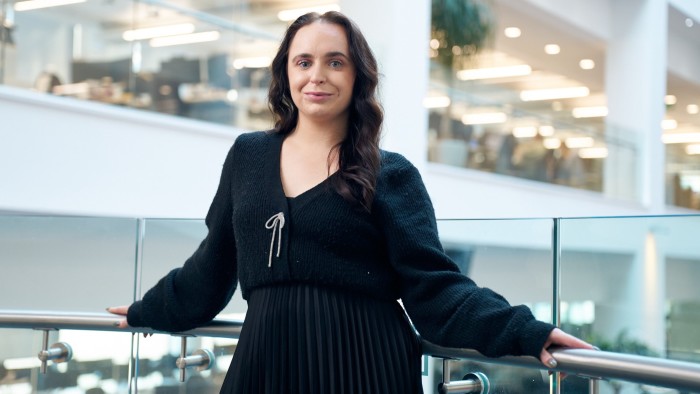After nine years of trying every hormonal treatment she could find to manage her pain, Lauren Cole had two options left — surgery or induce the menopause aged 23.
Endometriosis, one of the most common gynaecological conditions in Britain, had taken a heavy physical and mental toll. Unable to sit up during flare-ups, she also felt guilty for missing work on days when she “couldn’t get up off the floor”.
Cole opted for surgery. Following more than a year on an NHS waiting list, she asked for a private referral. Three months later she had her first diagnostic surgery.
Sufferers such as Cole are increasingly sounding the alarm over chronic treatment delays — the average waiting time for an endometriosis diagnosis in the UK is nearly nine years. The figure has risen by 10 months since 2020.
Endometriosis occurs when cells similar to the lining of the womb — the endometrium — build up elsewhere in the body, often causing chronic pain.
It affects about one in 10 women, with many going undiagnosed. Symptoms range from pelvic pain, painful periods, fertility problems and fatigue. There is no known cure.
Based in Bristol, Cole has had to balance her condition alongside her career as an operations manager at Hargreaves Lansdown, the UK’s largest retail investment site.
Her experience is typical of 1.5mn women who suffer from endometriosis in the UK, facing extended waiting lists with many resorting to paying for private care.
The government’s employment rights bill, a major shake-up of workplace rights that is currently moving through parliament, will require large employers to produce support plans for menopause and reproductive health.
But doctors and sufferers argue that gynaecological conditions are still not properly recognised after decades of failure to address systemic barriers to treatment.
More than 755,000 women are currently on a waiting list for an NHS gynaecology appointment. Last month the House of Commons women and equalities committee stressed the need for immediate action to reduce backlogs and aim for an average endometriosis diagnosis in under two years.
Professor Christian Becker, co-director of the Oxford Endometriosis CaRe Centre, explained that the difficulty of making a diagnosis arises because the disease has no biomarkers and is a heterogeneous disease, exhibiting a range of severity levels, causes and symptoms.
Without surgery, there is no definitive way to diagnose the condition.
The most common form of surgery for endometriosis is a laparoscopy — or keyhole surgery — considered a minimally invasive process where small incisions are made in the stomach to inspect the pelvis and burn or remove any affected areas.
The Department of Health and Social Care has outlined its mission to address public misconceptions of common reproductive health conditions — including what a “normal” period constitutes.
“Too many women are facing unacceptable waits for gynaecology treatment, and we know that more needs to be done to support women with endometriosis,” it said, adding that it was turning to the private sector to cut waiting lists.
But campaigners say that prejudice against women’s health remains entrenched.
The women and equalities committee reported last year that “medical misogyny” in the NHS, education and the workplace had contributed to poor awareness of gynaecological conditions.
“It is wrong that such a lack of understanding and awareness persists,” said Labour MP Sarah Owen, who chairs the committee.
The committee recommended improving poor and unnecessarily repeated experiences with medical professionals, updating NHS guidelines and medical student training.
Emma Cox, chief executive of Endometriosis UK, said the condition should receive the same consideration as other chronic illnesses such as diabetes. “It’s not for special treatment, it’s just recognising it’s a medical condition.”
Women experience a loss in earnings and reduced probability of being in employment after receiving a diagnosis, according to a study by the Office for National Statistics — the first of its kind to assess the impact of endometriosis on the labour market in England.
The NHS recently licensed the use of a daily combination therapy pill — known as Ryeqo — for treating endometriosis symptoms, yet it is only expected to help 1,000 of the 1.5mn UK women with the condition.
Becker said women’s awareness was rising. “What has changed is that young women in particular are more vocal about it. They approach us, they demand, rightly so, to be seen and heard.”
He added that the UK health system lagged behind peer nations, noting that Australia has a “national action plan” for endometriosis and is a frontrunner in financial support, recently announcing that medication will be subsidised for patients later this year.

Tracey Van Gemeren, a manager at British Airways campaigning for endometriosis awareness in the workplace, sees one of the most significant misconceptions — along with the condition being downplayed as just a “bad period” — is that surgery is a cure. After her diagnostic surgery in 2019, she suffered complications due to the severity of the disease.
Three years and three major surgeries later, her endometriosis returned. “You rely on the hope that after each surgery you have, that it doesn’t grow back again. You forget what it’s like to feel normal.”
She called for flexibility for sufferers to work from home and to take time off without fear of repercussions.
Cole agrees that flexibility is essential: “It gives you the opportunity to work with your condition, not against it, so that you don’t detrimentally impact your ability to work.”





